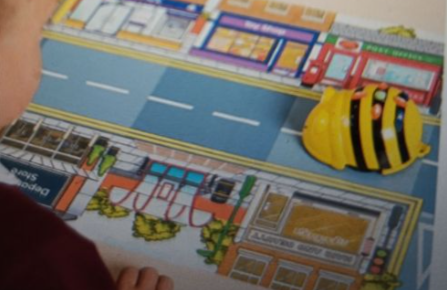By Jasminka Mezak and Sanja Vranić, University of Rijeka
One of the important outcomes of the Greencode project is the Activity Book as practical material for students of Early Childhood Education (ECE), but also as a source of ideas for practitioners – educators working in preschool institutions. This publication provides ready-to-print activities that support the implementation of IBL, environmental education and educational robotics in preschools.
Explaining the effects of pollution and promoting environmental awareness to young children should be simple and illustrative, tying in with their everyday experiences. Although the urban environment is rich in content and opportunities, it is increasingly confronted with the negative consequences of rapid development: air, water, soil and noise pollution. These forms of pollution threaten not only nature, but also the daily lives of its inhabitants, including the youngest. It is therefore extremely important to start environmental education at pre-school age – in order to develop environmental awareness and take responsibility for nature and one’s own city.
Preschool children learn through play, observation and their own experiences. Therefore, the methods of teaching ecology are most effective when they are interactive and adapted to the age of the children. The example activity “A City” emphasises the importance of combining real-life experiences (e.g. city walks) with a story, characters such as the robot Reco and creative activities such as drawing, photographing and programming robots. One of the most important activities is building a “Dream city”. In this game, the children create a vision of the city they would like to live in – a city without waste, with green spaces, bike paths, recycling bins and flower parks. They use their own drawings and photos taken on a walk through the neighbourhood and sort them into “I like” and “I don’t like” boards. An educational robot (e.g. Bee-Bot) is also integrated into the game, which moves along a network of children’s drawings and thus symbolically “walks” through the children’s ideas. They can also play a board game made for this occasion with or without robot. In this way, the children develop not only ecological, but also digital and logical skills.
Children also analyse their own habits: travelling to kindergarten (by car, on foot, by bike), separating waste at home, caring for plants. These simple habits help them to realise that, even though they are small, they can do a lot for a cleaner and healthier city. The added value can be seen in the reflection: the children think about what they have learned, suggest new solutions and plan small experiments – e.g. planting a plant, organising a “Green Day” or a recycling game. In all of this, the educator’s role is to guide, encourage and support the children’s ideas and research.
The effects of pollution on the urban environment are clearly visible to preschool children. However, children are also willing to understand these problems when they are addressed through play, stories and personal experiences. The Greencode project and the Activity Book show how simple but well thought-out activities can develop a strong ecological awareness and responsibility for the environment. Children don’t just learn about ecology – they actively shape it. Ultimately, children who learn to protect nature from an early age will become adults who know how to build a sustainable and healthier society. And every flower they plant, every bottle they recycle and every park they create is a small step towards a bigger – greener city for us all.
Check it in the Activity book!

